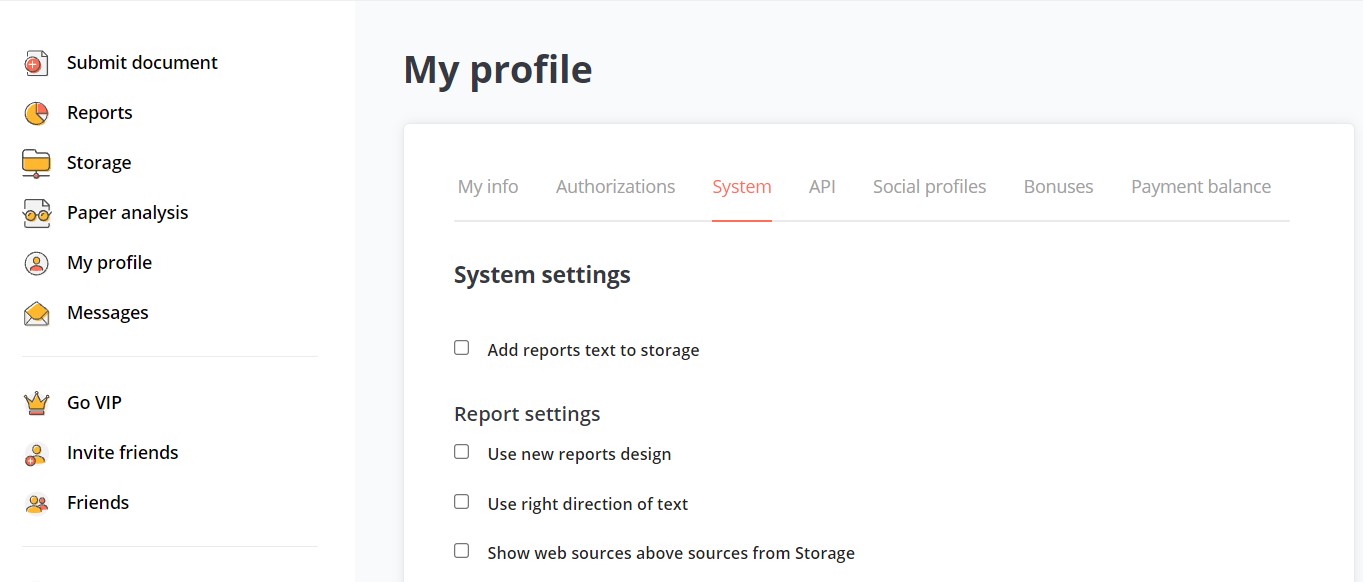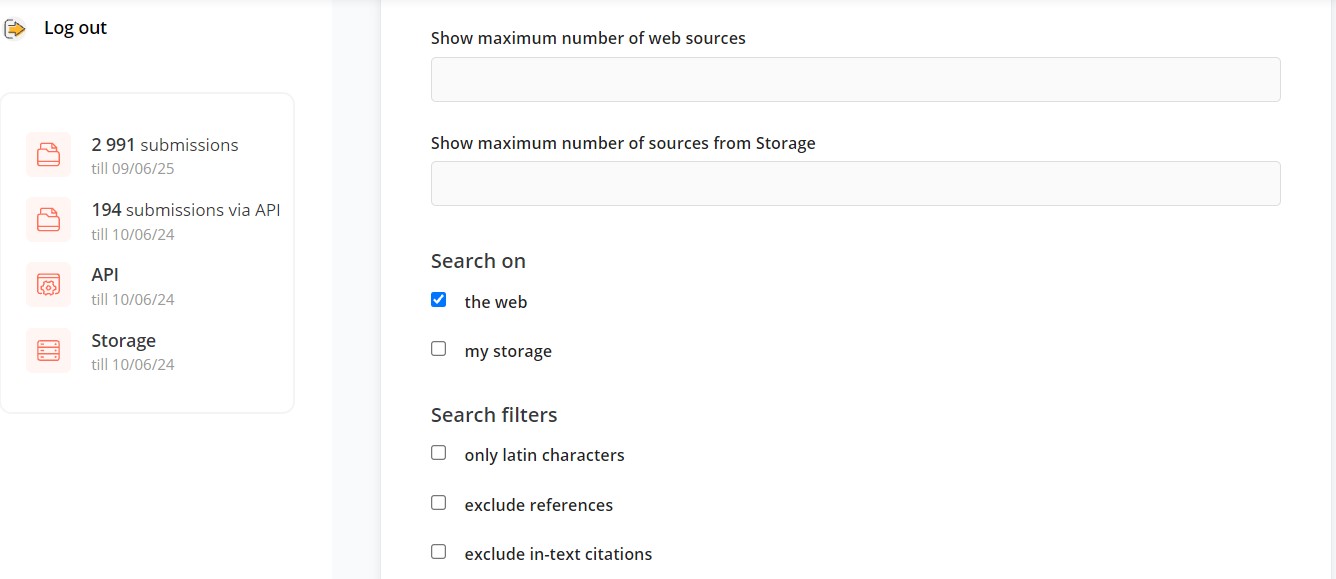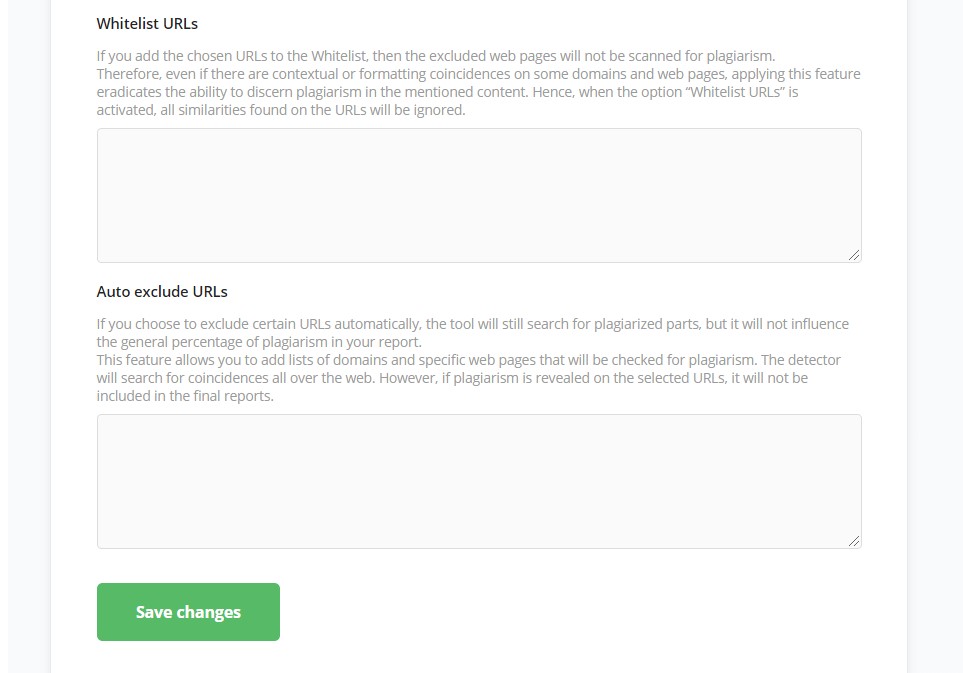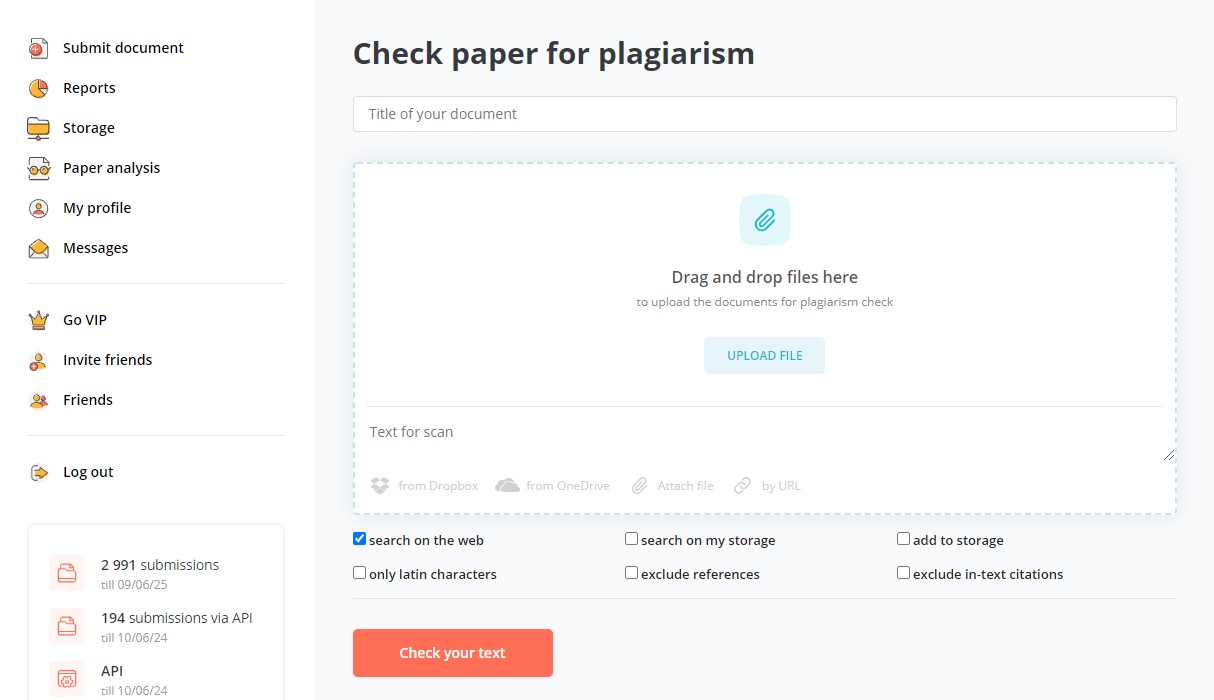All You Need to Know about Different Options in Search Filters
A user profile in a PlagiarismSearch tool offers various options that facilitate performing the key function of this plagiarism checker: you can check plagiarism online or against your own database. The users can check the plagiarism with the use of these special attributes to improve their experience and refine the search results according to their needs. It is much more convenient for them to display only the data relevant either for the current similarity report or for all checks performed by this particular user.
Detailed Explanation of Options in Search Filters
The System settings in the tab page My Profile contain several options of Search Filters for the convenience of the users. In the user's account, there is an option of setting filters by default. Therefore, there is no need to adjust the settings for every new plagiarism check: the same filters will be applied.

The System settings offer several options to choose from for the users.
Add reports text to storage – this option allows the users to save all checked files to the storage to form a personal database for future checks.
It is also possible to adjust the Report settings by ticking one of the following options:
Use new reports design – one can try the options of a new interactive plagiarism report which shows the sources of copy-pasted content and gives clickable links to trace the specified percentage. It is easy to analyze the originality of the text owing to different colors used for highlighting plagiarized parts. Interpretation of the colors is provided at the bottom of every page of the report.
Use right direction of text – this option has been introduced to accommodate different languages that require right-to-left format of the text.
Show web sources above sources from Storage – it is convenient to use this option if the user needs to do scanning of similar texts. For example, checking a dozen of essays on the same topic from a group of students, it is better first to see the sources of the internet content and only then matching with the papers of other students.

Show maximum number of web sources – this is the option that specifies how many sources from the Internet will be presented above the links to the storage.
Show maximum number of sources from Storage – this is the option that specifies how many links to the storage will be presented after the traced sources from the Internet.
The users indicate whether the search for plagiarized content is done against the web sources or the personal storage with the previously uploaded papers. It is possible either to tick one of the options or opt for a combination of both to get results from the web and the storage.
The users can check plagiarism online choosing the option “only Latin characters”
It is a useful option as one of the common tricks played by fraudsters and cheaters is replacement of the characters. It is not difficult to substitute some frequently repeated letters in the Latin alphabet with their counterparts from Cyrillic or Greek ABCs. In that case, you may check paper for plagiarism but such changes will not be spotted. On the other hand, if you use a plagiarism checker with the option of only Latin characters on, it will be possible to spot the changes and identify the copy-pasted parts of the text.
The users can exclude references from the search results
It is reasonable to exempt the list of the used sources from the similarity checks as the details of the book or article cannot be different in different papers. You can check plagiarism online being sure that you will not get a high percent of similarity in the obtained results just because of the cited works.
The users can exclude in-text citations from the search results
Our online plagiarism checker for students makes sure that the properly formatted quotations (for instance in APA or Harvard Style) in the text will not be treated as a copy-pasted passage. Since there is no crime in inserting in-text citations, it makes sense to exclude them from a plagiarism report.

The users can whitelist particular URLs
Adding specific URLs to the whitelist, one can use a plagiarism checker without scanning the mentioned web pages. In case there are some similarities on the specified URLs, they will be disregarded during the plagiarism check.
The users can auto exclude URLs
Searching for plagiarism, the tool will show the similarities with the chosen web pages, but the overall similarity score will not be affected in the final report.
Although it is convenient to use a set of options by default for all the plagiarism checks, some particular options can be chosen individually for every new attempt.

Why Should You Tick/Untick Certain Options in Search Filters
Striving for the most effective search for copied fragments, individual customers want to use a plagiarism checker with all possible benefits. Thus, the options of excluding in-text citations and references from the search results enjoy the greatest popularity. The plagiarism check with these options on enables the users to detect all actual similarities between the web database and a particular paper other than coincidences caused by the same factual material (sources).
As for the API users, they most frequently opt for such options as Whitelist URLs and Auto exclude URLs. Thus, the plagiarism percentage in the report is not affected by the similarities with the materials of the websites you know about. The final report shows a similarity score with the actual plagiarism, not the use of allowed materials.